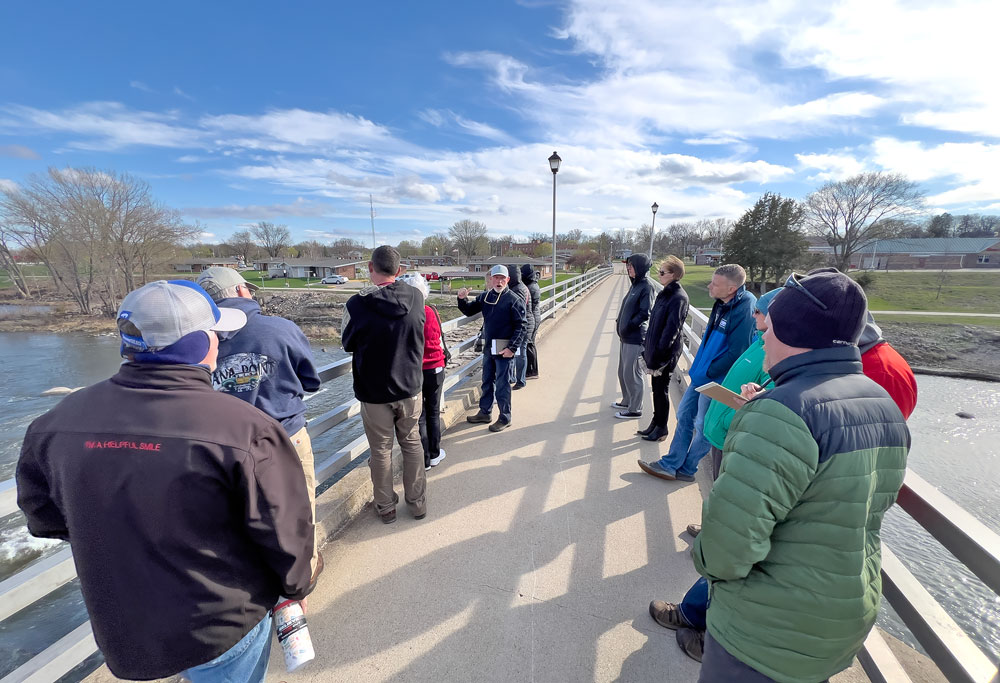SOIL CONSERVATION: Charles City watershed project coordinator tells how to improve soil health
By Mary Pieper, Special to the Charles City Press
Soil health is more critical than ever because of the increased demands on farmers to have big crop yields, according to Charles City Watershed Project Coordinator Douglas Johnson.
But what is soil health? How can you test for it? How do you improve it?

The Natural Resource Conservation Service defines soil health as the “continued capacity of the soil to function as a living ecosystem that sustains plants and animals,” Johnson said.
Living organisms in healthy soil include microscopic bacteria, fungi, insects and earthworms, according to Johnson.
Last week, on June 23, was National Soil Health Day.
The healthier the soil, the more capable it is of producing at its maximum potential, Johnson said.
This is important for two reasons, according to Johnson.
He said the global population is expected to climb to more than 9 billion people by the year 2050, which will increase the demand for food products as well as production of crops needed for fuel such as ethanol.
At the same time, the number of acres used for farming is decreasing as more land is converted into non-agricultural uses.
Johnson said soils in Floyd County “are OK, but they can be a lot better and give us better yields.”
For generations, farmers plowed fields to prepare them for crops, which breaks down the natural structure of the soil because it is in “a constant state of being disturbed,” Johnson said.
Another factor impeding soil health is a lack of plant diversity, he said.
A good time for farmers to test the health of the soil in their fields is after a heavy rainfall, according to Johnson.
If the soil is healthy, “there’s probably not going to be as much ponded water on it,” he said, noting good soil can absorb more moisture.
Also, if you walk on healthy soil while it is wet, it should hold up your weight so your feet don’t sink into it, according to Johnson.
He also recommends shoveling up some dirt to check what’s going on beneath the surface.
If the soil is healthy, it will be chunky and hold together well. He also said it will have lots of insects and earthworms in it.
Johnson said the two best ways to improve soil health are using no till or strip till farming practices, which decreases soil disturbance, and planting cover crops.
Cover crops such as legumes or cereal grains can be planted to grow between the time regular crops are harvested and the ground freezes, as well as the time between the spring thaw and when planting of corn and/or soybeans begins.
Johnson said this increases the amount of time the ground has something growing in it, which makes the soil more active.
Johnson also recommends farmers rotate their regular crops with grain or hay, as well as planting trees and prairie grasses on their land.
In addition, he advises a more precise use of insecticides, herbicides and fungicides. Johnson said farmers should only use them when and where they have a known pest because they have the potential to kill non-targeted organisms that are good for the soil.
He also said farmers should be careful about what kind of fertilizer they use because some can change the pH level in the soil dramatically, which isn’t good for it.
Johnson said town dwellers can follow similar procedures as farmers to promote soil health in their lawns and gardens.
The common perception that an attractive lawn should resemble an uninterrupted carpet of green grass does not take optimum soil health into account, according to Johnson. He suggests planting some clover as well as grass to increase plant diversity.
He also recommends minimizing the application of fertilizer, insecticides and herbicides.
“Know that you need it before you apply it.”
Johnson advises gardeners to plant vegetables that don’t require tilling, such as potatoes, tomatoes and anything else that can be bought as a started set.
Other good options are peas and beans because all you have to do is “poke a little hole in the soil” and put mulch over the area, he said.
After all the vegetables are harvested late in the fall, you can seed the garden with oats and rye without disturbing the soil, according to Johnson.







Social Share